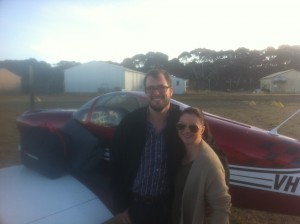So this week was Gynae list – a good list for me as I get to put in spinals +/- GA for vaginal hysterectomy and intubate everyone having a laparoscopy – much better than the hum-drum sedation lists for colonoscopy…also delighted to hear that RDASA president Dr Scott Lewis has nominated as the GP-Anaesthetist rep for ANZCA – Scott is eminently pragmatic and hopefully will bring the voice of rural GPAs to the table. Scott was over on KI for the Feastival (food and wine event) and was good to catch up, if only for a short time.

Meanwhile some disappointments in South Australia regarding “quality & safety”.
Last year I was excited that Dr Toby Fogg and colleagues in NSW were setting up an Australia & NZ Emergency Dept Airway Registry. Tedious though audit and data collection can be, the reality is that airway management remains one of the ‘high risk’ procedures in medicine, more so for the isolated rural GPA without immediate backup and with limited resources.
So I thought it would be interesting to compare metro vs rural ED stats – especially as the audit of a respected metro ED showed that ED intubation was not as good as we thought it was (yes the tube was passed, but not on first attempt and with risk of desaturation and hypotension – the killers of critical patients) – read more by downloading the paper or read this post from LITFL
I have been trying to pressure the lead Consultant for Anaesthetics in Country Health SA to get an airway registry going in rural South Australia – speaking to colleagues there seems to be a dearth of meaningful input into rural anaesthesia in this State, with concepts like apnoeic diffusion oxygenation, difficult airway equipment and airway audit or sharing of cases/difficulties alien to many rural doctors. I reckon that bemoans a lack of leadership…
To be fair, Sara Norton (CHSA lead for rural anaesthesia) has emailed me saying that she thinks this “is a worthy project” – but is unable to advance as “the CHSA safety & quality committee were not keen to provide resources or backing”
What the?
It seems that every time I open my email, there is a weekly ‘safety advisory’ message from Adelaide advising me not to use a certain type of titanium hip joint or not to use rare monoclonal antibody cancer therapy in my small rural hospital…
…yet calls for improved equipment and resources for rural hospitals go unanswered. And to my mind these are not airy-fairy “wants not needs”…they relate to safe provision of services.
To whit, current unresolved safety issues in rural SA include
- the above failure of any meaningful leadership in SA rural anaesthesia and the CHSA quality/safety committee putting the kybosh on a rural Ed airway audit – despite fact this is the highest risk thing we do in ED and Toby Fogg’s audit demonstrating failings in a major metro ED in NSW
- the 2012 survey demonstrating the lack of equipment to manage a difficult airway in rural Australia, despite clear professional standards from ANZCA (PS56). Calls for a videolaryngoscope or ED training in difficult airway remain adrift
and
- ongoing problems with monitors. On KI we have (or rather had) three options – a Phillips MRX defib/monitor for use in ED, a new Phillips touchscreen monitor in OT and ward telemetry. Yesterday the Phillips OT monitor went into standby mode in the middle of a major case and deleted all data prior to this! The ward telemetry unit has been ‘in service’ since Feb 2013 and still not replaced, and a new memo today advises that the Phillips MRX defib is involved in a product recall and may not be able to deliver shocks until software is upgraded. This means we have no reliable means of monitoring a sick patient. On an island…
Bloody hell. You would think this would be the sort of ‘never event’ that would spark immediate action…
…but sadly my calls for a spare monitor remain unanswered and we will instead be reliant upon the CWA selling enough teddy bears and scones to finance purchase of equipment.
I reckon rural patients deserve better!
One of my favourite papers is “If Nothing Goes Wrong is Everything Alright?‘ – an examination of statistical and psychological factors around rare events in medicine. If we accept that our work involves some degree of risk, for both doctor and patient, then we need to be able to assess this risk, manage it and ideally to mitigate against it.
It seems pointless to have trained staff but to lack the resources to enable them to do their job or mitigate against potential risk.
The solution? A commitment from the Health Dept to adequately resource rural Hospitals, to listen to clinicians and to conduct meaningful audit of processes would be nice. Concomitant would be effective clinical leadership and a commitment to ongoing training and upskilling of all clinical staff, whether VMO doctors or salaried nurses.
Better that than memos about titanium hip screws and the latest moxifliximab!
I won’t hold my breath.